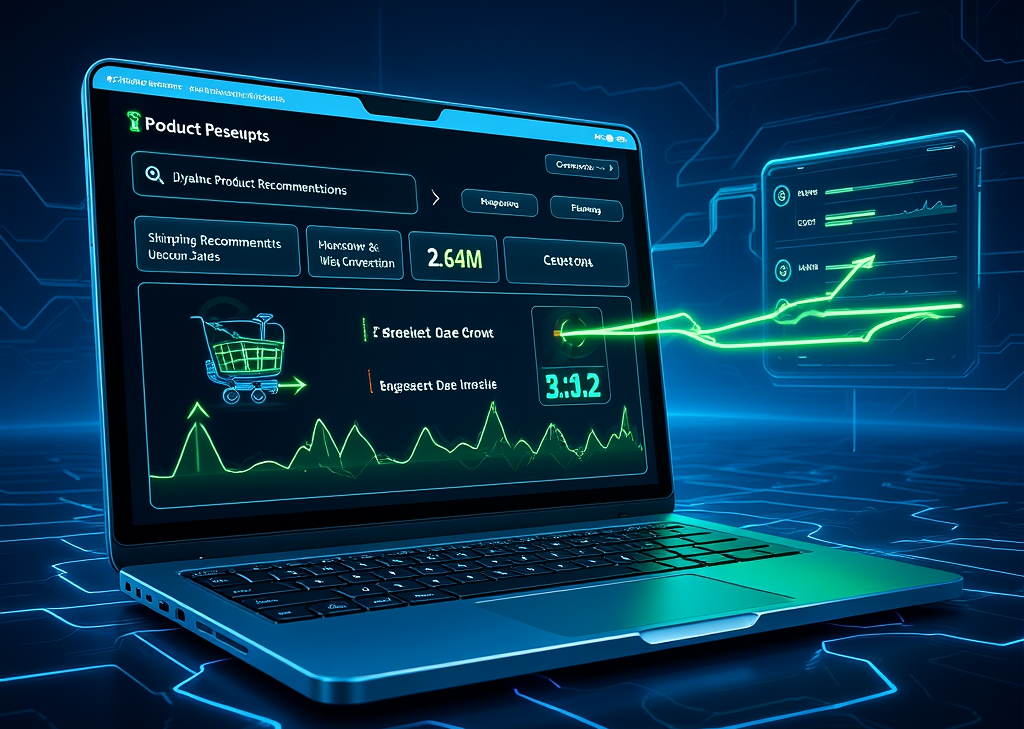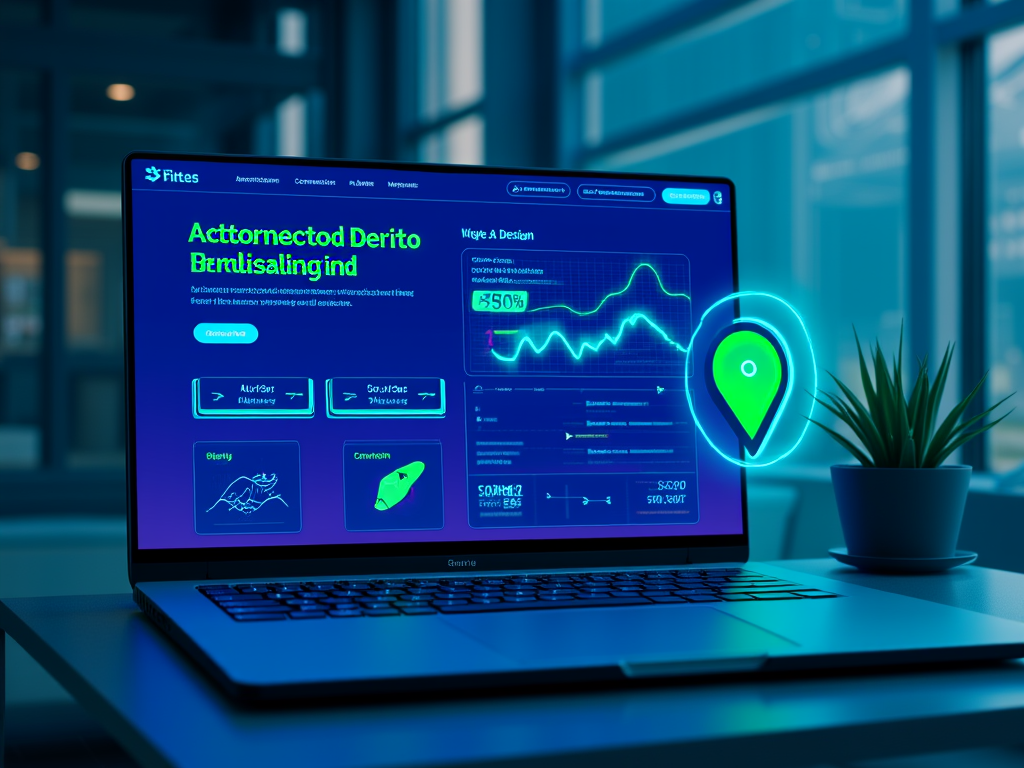Personalizing your website to match buyer behavior
Introduction
In a world drowning in noise, personalization rises like a lighthouse guiding potential buyers toward the shores of clarity and connection. Imagine a visitor stepping onto your website, only to find a seamless experience tailored to their every desire. No more generic greetings or irrelevant content; instead, they encounter offers and products that resonate with their unique preferences. This art of personalization isn't just a trendy strategy; it’s a powerful tool for transforming casual browsers into loyal customers.
What is buyer behavior?
To embark on this journey of personalization, we first need to decode the essence of buyer behavior. Buyer behavior refers to the decision-making processes individuals undergo while searching for, purchasing, and using products. This complex dance of emotions, needs, and motivations varies significantly across different demographics, which makes understanding these elements critical for effective website personalization.
- Emotional triggers: We often buy based on how we feel. Remember that moment you purchased something just because it felt good? Harness that emotion.
- Decision-making processes: Some customers spend a day contemplating, while others make snap judgments. Knowing this can help you cater the website experience to different types of shoppers.
- Pain points: What keeps your customers awake at night? Highlight solutions to their problems, and they’re more inclined to engage.
By creatively weaving insights about buyer behavior into the fabric of your site, personalization evolves from a good idea into a necessity.
Mapping the customer journey
Now that we’ve grasped the concept of buyer behavior, let’s dive deeper into the crucial element of customer journey mapping. Consider this your blueprint; understanding how customers navigate your website can unlock doors to opportunities concealed under layers of data.
- Awareness Stage: Customers discover your brand through online ads, social media, or word-of-mouth. Here, their first impression matters most.
- Consideration Stage: At this point, they weigh your offerings against competitors. Personalizing product descriptions with user reviews or comparisons can tip the scales.
- Decision Stage: This is where the rubber meets the road. Incentives such as discounted shipping or recommendations based on previous browsing behavior can seal the deal.
This roadmap enables you to anticipate the emotions and needs of your visitors, creating a compelling narrative that guides them seamlessly toward conversion.
Effective website personalization strategies
Bringing personalization to life requires a blend of tactics and tools. Here’s a glimpse into the treasure trove of strategies that can spark change on your website.
Dynamic content and product recommendations
- Tailored Product Suggestions: Showcase items that align with customer preferences and previous interaction history. Ever noticed how Amazon recommends items based on what you just browsed? It’s that kind of magic.
- Flexible Homepage Layouts: Use algorithms to modify your homepage based on visitor data. If you've seen a trend of visitors from tech blogs, display the latest gadgets prominently.
- Content Personalization: Bringing together blog posts or articles that resonate with visitors based on their interests can pique their curiosity. Perhaps a guide on optimizing home office setups for someone exploring office chairs.
These approaches aren’t merely skin-deep; they delve into the desires and impulses of your audience, resulting in an immersive experience that fosters engagement and connection.
Behavioral overlays and urgency cues
Picture this: a potential buyer teetering on the edge of commitment. Here’s where behavioral overlays come into play.
- Exit-Intent Pop-ups: When a user's mouse hovers over that dreaded exit button, throw a personalized offer their way. A friendly reminder of what they’re leaving behind, combined with an enticing discount, can lure them back in.
- Urgency Cues: Strategically placed timers promoting fleeting sales create that pulse of urgency. Statements like “Hurry, only 3 left in stock!” force an impulse buy wrapped in excitement.
However, it’s crucial to ensure these overlays enhance the shopping experience rather than disrupt it; the last thing you want is a frustrated visitor clicking away.
Personalized calls-to-action (CTAs)
CTAs are your sales army. They rally your visitors and push them toward the finish line. Yet, a one-size-fits-all approach doesn’t cut it.
- Contextual and Dynamic CTAs: Offer different CTAs for new visitors versus return customers. For instance, a first-time visitor might respond better to "Discover Our Collection" rather than "Purchase Now." More personalization creates more meaningful interactions.
- Follow-Up Sequences: Maintain the connection even after the sale. Send relevant content or product recommendations in follow-up emails, tailored to what they’ve purchased.
The goal is simple: keep your buyers engaged without overwhelming them with noise. Tailored CTAs serve as signposts along their journey, guiding them toward the products they truly want.
Geolocation and referral-based personalization
Embrace the local flavor in your personalization efforts. Geolocation can turn your website into an experience that feels personal and relevant.
- Localized Offers: Knowing where your visitors are located enables you to present shipping options, local discounts, and even culturally relevant content. Picture a visitor from Miami seeing a promotion for sunglasses during summer.
- Referral Source Adaptation: Visitors coming from social media platforms might respond differently than those arriving via email campaigns. Adjust your messaging accordingly to maximize relevancy and effectiveness.
Let’s not forget the power of data. By gathering and analyzing this information, businesses can stay ahead of the personalization game and keep the conversation flowing smoothly.
Data-driven personalization best practices
Harness the right data to fuel your personalization efforts. Here are essential best practices to keep in mind:
- Leverage first-party data: This golden data (browsing, purchasing patterns) can be your best ally. Analyze it to draw insights that power your personalization engine.
- Segment your audience: Develop different marketing personas based on behavior—first-time shoppers, loyal customers, or those who abandon their carts. Address their unique needs with tailored content.
- Analyze and iterate continuously: The landscape of customer behavior shifts like quicksand. Maintaining a cycle of feedback and adjustment ensures that your strategies evolve alongside your audience.
Armed with these insights, you’re well on your way to fabricating a tailored experience that resonates deeply with your buyers, maximizing engagement, conversions, and loyalty that few can rival. The world of website personalization awaits, ready to unfold its potential.
FINDDOMAIN.GE (Internet services LLC) is a very interesting and rapidly developing IT company. The main directions are: web development, domain and web hosting. It also offers clients sub-services and outsourcing related to the main services.
BEST OFFERS:
Do you want to create your own company website or create your own online business on the Internet?
– WEB HOSTING
– DOMAIN REGISTRATION
– WEB DEVELOPMENT
– SITE BUILDER



Original approaches to website personalization
Building on the established tactics, it’s time to embrace original approaches that breathe new life into your website personalization strategies. Creativity doesn’t just push boundaries; it also opens new avenues for connection.
Micro-segmentation by behavioral triggers
Digging deeper into buyer behavior through micro-segmentation allows your messaging to resonate at unprecedented levels. Instead of relying solely on broad labels like “returning customer,” consider tracking micro-behaviors.
- Real-time response: For instance, if a user lingers on your product page without adding items to the cart, trigger a tailored message that addresses their hesitation, like additional product benefits or customer testimonials.
- Custom messaging: Create specific offers for users who viewed certain categories but have yet to purchase. For example, “Hey there! A friend just bought those hiking shoes you were checking out. Want to join them?”
This level of engagement transforms your site from a generic storefront into a personalized living experience where every visitor feels recognized and valued.
Personalized post-purchase journeys
The journey doesn’t end at checkout. To cultivate brand loyalty, consider personalized post-purchase experiences that make customers feel appreciated.
- Thank-you pages: Design these pages to reference the items purchased and suggest complementary products, enhancing the already positive vibe of making a purchase. “You’ve got great taste! How about exploring these accessories?”
- Follow-up communication: Send tailored emails that not only thank customers for their purchase but also provide care tips or invites to exclusive future deals related to their product.
When customers feel valued even after completing a transaction, they’re more likely to return for future purchases.
Constant feedback and refinement
Personalization isn’t a one-time setup. It demands attention and multiple rounds of iteration. Implementing feedback mechanisms can keep your strategies sharp and relevant.
- Surveys and feedback forms: After some time following a purchase, invite your customers to share their thoughts. This not only shows you care about their opinions but allows you to inform future personalization strategies. Questions like “What would you like to see more of on our site?” can yield critical insights.
- Testing changes: Use A/B testing to measure the effectiveness of different personalized elements and continuously refine your strategies based on what resonates best with your audience.
Ultimately, clear communication with your audience fosters trust and enhances their interaction with your brand.
Conclusion
Website personalization is a journey, not a destination. By honestly understanding buyer behavior and mapping their journey, you can create a dynamic online experience that resonates with customers on a personal level. As you explore strategies like dynamic content, urgency cues, and personalized post-purchase experiences, keep in mind the importance of creativity and data-driven decision-making.
In the bustling online marketplace, personalization not only differentiates your brand but also establishes loyal relationships with customers. As you move forward, prioritize continuous improvement, staying nimble and responsive to the ever-changing landscape of consumer preference. Personalize boldly, adapt eagerly, and watch as your engagement flourishes and customer loyalty deepens.
Relevant video resources
– How Personalization Affects Buyer Behavior
– Boosting Conversions Through Website Personalization
References
1. Source 1
2. Source 2
3. Source 3
4. Source 4
5. Source 5
6. Source 6
7. Source 7
FINDDOMAIN.GE (Internet services LLC) is a very interesting and rapidly developing IT company. The main directions are: web development, domain and web hosting. It also offers clients sub-services and outsourcing related to the main services.
BEST OFFERS:
Do you want to create your own company website or create your own online business on the Internet?
– WEB HOSTING
– DOMAIN REGISTRATION
– WEB DEVELOPMENT
– SITE BUILDER





![Website Hosting Providers in [Local Area]: What to Choose](https://besthosting.ge/wp-content/uploads/2025/08/website-hosting-providers-in-local-area-what-to-choose.jpg)
![WordPress Website Experts in [Your City]](https://besthosting.ge/wp-content/uploads/2025/08/wordpress-website-experts-in-your-city.jpg)

![Web Development Services in [Local Area] for E-commerce](https://besthosting.ge/wp-content/uploads/2025/08/web-development-services-ecommerce-local-area.jpg)